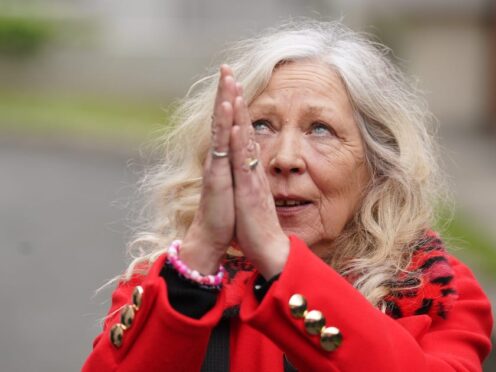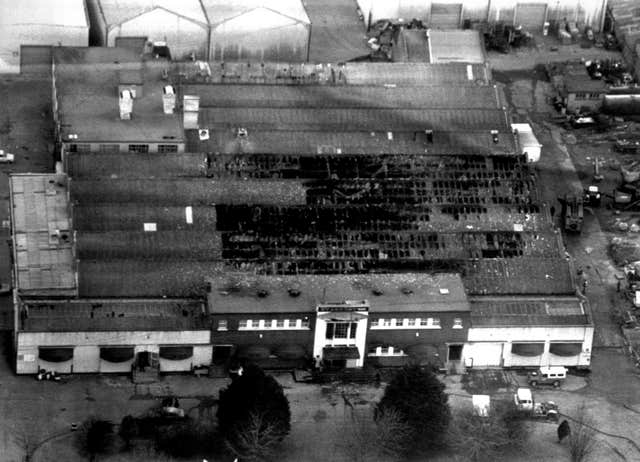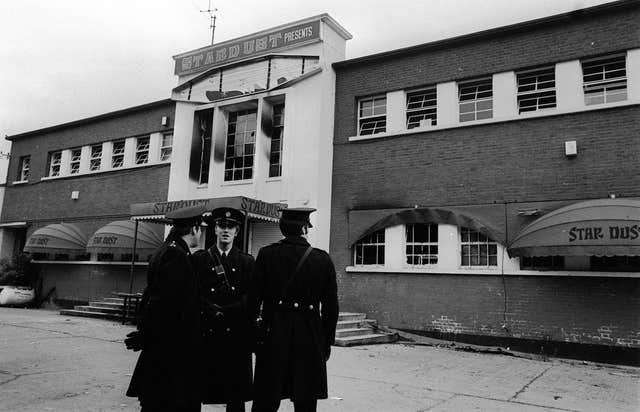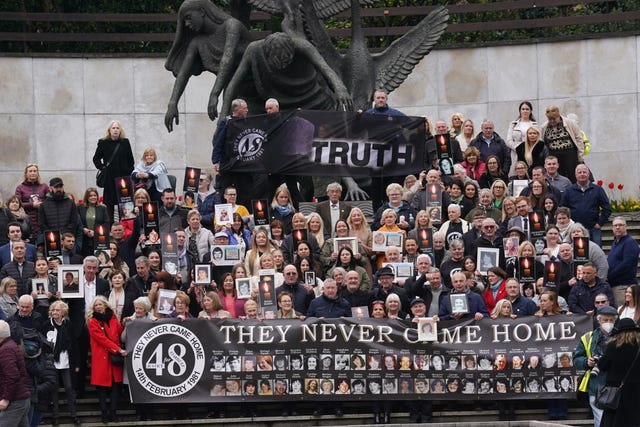
A verdict of unlawful killing has been returned by the jury in the Stardust fire inquests for all 48 people who died in the 1981 Dublin nightclub disaster.
The devastating blaze in Artane, north Dublin, broke out in the early hours of Valentine’s Day 1981.
On Thursday, the jury foreman at Dublin District Coroner’s Court said it had reached the same verdict of “unlawful killing” for each individual.

Some family members of the victims jumped to their feet and clapped at the verdict, while some were moved to tears as they remained in their seat.
Others embraced each other as soon as the foreman said “unlawful killing”.
The jury determined that the fire originated in and started due to an electrical fault in the hot press in the bar.
It was unable to determine when the blaze started but said it was first seen outside the building between 1.20am and 1.40am.
Jurors said the fire was first seen inside the ballroom between 1.35am and 1.40am.

The jury determined that polyurethane foam within seating, the height of the ceiling in a west alcove of the building and carpet tiles on the walls were contributory factors to the spread of the fire.
However, it said the condition of the fire extinguishers was not a contributory factor.
The jury said the lack of visibility due to black smoke, a lack of knowledge of the layout of the building, toxicity of the smoke and/or gases, the heat of the fire, failures of the emergency lighting system, lack of staff preparedness, and the speed of the spread of the fire were factors that impeded exit.
Also asked if any of the deceased were impeded in their ability to exit due to locked, chained or otherwise obstructed exits, the jury said “yes”.
Asked if this was a contributory factor in any of the deaths, the jury also said “yes”.
The jury further recommended improved reviews of building regulations following the inquest.

In majority of the cases, the medical causes of death were recorded as due to inhalation of fire fumes and heat.
After the verdicts were delivered, family members hugged their legal representatives. Others wiped away tears. One member of the jury became visibly emotional.
Coroner Dr Myra Cullinane thanked the jurors for their service, stating that “the passing of years hasn’t diminished the horror of some of the evidence that you have heard”.
At that point, families of the victims stood up in unison and applauded the jury members at length, with one person shouting “thank you”.

Dr Cullinane paid tribute to the “persistence and commitment” of the families who had campaigned for the fresh inquests.
“To the families, I acknowledge the deaths of these 48 young people is a source of ongoing grief to those who loved them and it remains the defining loss of their lives,” she said.
“However, I hope that family members will have taken some solace from the fact that these fresh inquests were held, that the facts surrounding the deaths were examined in detail, that moving testimony was heard from many of those involved in the events of the night and, most importantly, that you the families felt fully involved in proceedings, however difficult it was to hear all of the evidence.
“The fact that these inquests have been held at all is in no small part due to the persistence and commitment of families over the years.
“And, finally, we remember those 48 young people who lost their lives on that fateful night. It is their lives that we’ve sought to vindicate by way of these inquests.”
Following the verdicts, Irish premier Simon Harris described the Stardust tragedy as “one of the darkest moments in our history”.
48 people never came home from the Stardust nightclub in 1981.
Their families never gave up on justice for them. They never let Ireland forget them. They ensured they were never alone.
The country owes the families a debt of gratitude. pic.twitter.com/DNFR9sAf04
— Simon Harris TD (@SimonHarrisTD) April 18, 2024
“A heartbreaking tragedy because of the lives that were lost, the families that were changed forever, and the long, drawn-out struggle for justice that followed,” said the Taoiseach.
Mr Harris reflected on those who had lost their lives and paid tribute to their families for pursuing truth and justice “to ensure that such a disaster never happens again”.
He said the Government would consider the verdict in full, and the recommendations of the jury.
“I want to acknowledge and thank the coroner, and her team and the jurors,” he said.
“Forty-eight young people never came home that night, but as Taoiseach I want to say this to their families: You never gave up on justice for them, you never let Ireland forget about them. They were never alone, and our country owes you a great debt for that.”
The jury confirmed on Wednesday it had reached majority verdicts after 11 days of deliberation.
The coroner deferred the delivery of the verdicts until Thursday so family members could be present.
Directed by Ireland’s then-attorney general Seamus Woulfe in 2019, the inquests were the longest ever held in Ireland, with proceedings commencing a year ago.
The original inquests in 1982 lasted five days and were confined to recording the medical cause of the deaths and did not examine the circumstances of the fire.

Enjoy the convenience of having The Sunday Post delivered as a digital ePaper straight to your smartphone, tablet or computer.
Subscribe for only £5.49 a month and enjoy all the benefits of the printed paper as a digital replica.
Subscribe